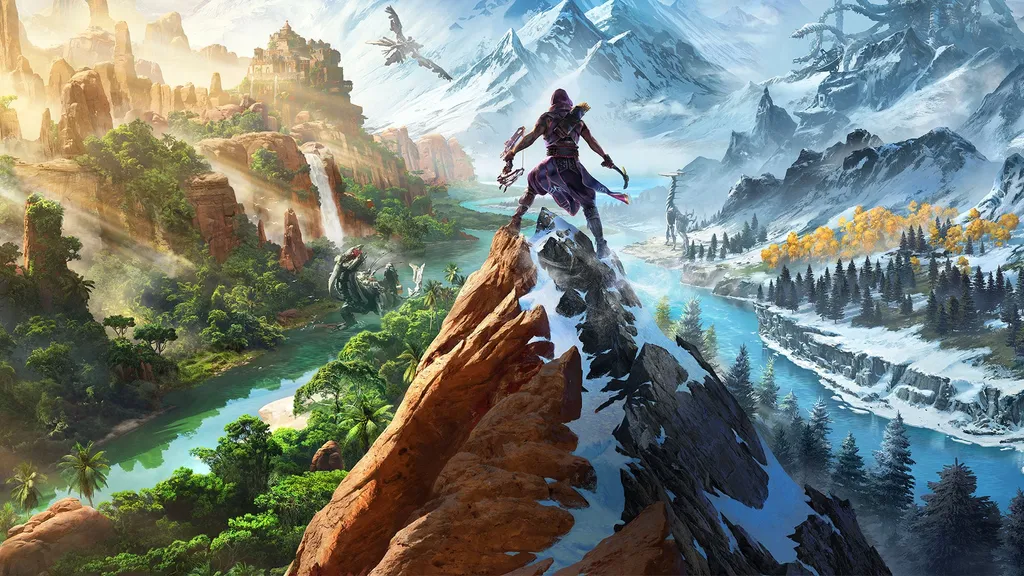Horizon Call of the Mountain headlines a strong start for PlayStation VR2, showcasing the headset’s new features through an engaging action-adventure. Here’s our full review.
Launch games are critical for any new platform. First impressions only happen once and while PlayStation VR2 boasts impressive specs, few things get people talking more than first-party exclusives. Software always pushes hardware – people won’t invest in a platform where there’s nothing to play. As Sony’s major launch game, Call of the Mountain faces a difficult balancing act in delivering an exciting VR adventure that also stays true to Horizon. Thankfully, it delivers.
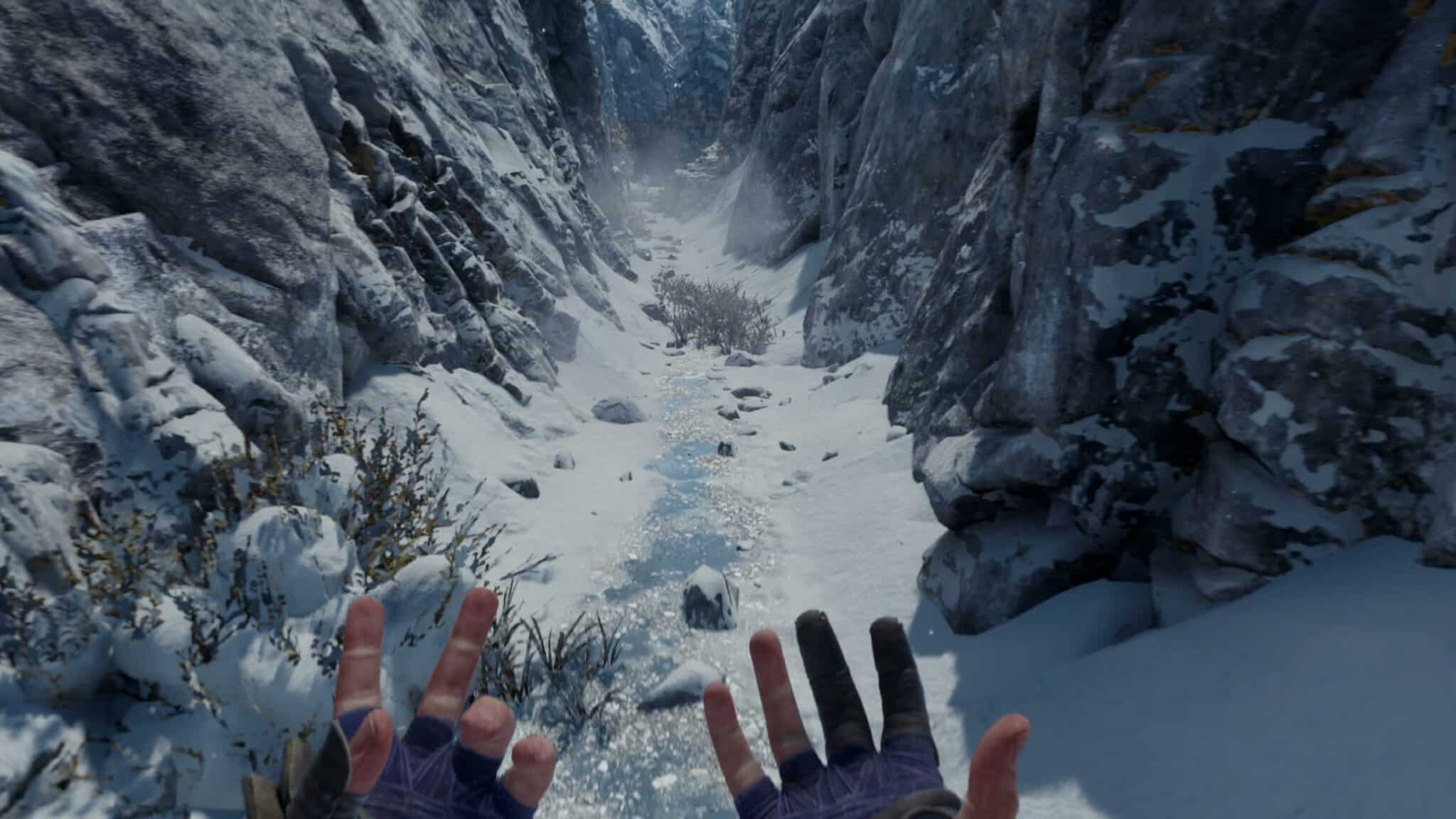
Set before Forbidden West, Call of the Mountain focus on Ryas, a former Shadow Carja soldier who seeks atonement for past crimes. Working with the Sun-King Avad’s spymaster, Blameless Marad, you’re tasked with investigating a new threat to the Sundom. While I never felt much attachment to Ryas, I enjoyed this alternative look into Horizon’s world after beating both main flatscreen entries on console. Using a new protagonist is a clever move that frees this spin-off from narrative constraints, though Aloy still makes an appearance.
[vc_row][vc_column][vc_cta h2=””] Horizon Call of the Mountain Review – The Facts
Platforms: PSVR 2
Release Date: February 22
Developer: Guerrilla Games and Firesprite
Price: $59.99[/vc_cta][/vc_column][/vc_row][vc_row][vc_column][vc_column_text]
Call of the Mountain certainly isn’t your standard Horizon experience; it forgoes the open world and segments the action between replayable missions. Those are accessible from Dawn’s Grasp, a small Sundom settlement and your hub area, though you won’t find much to explore here. Ryas can talk with several NPCs like Marad, manually craft new tools, and choose his next mission.
Missions generally follow a predetermined route with occasional branching paths, which often hide collectible items to display in Dawn’s Grasp or armor fragments for improving your health. Horizon isn’t subtle with directions, marking climbable ledges with chalk, but Ryas can use his Instinct ability to reveal the right path and highlight interactable objects.
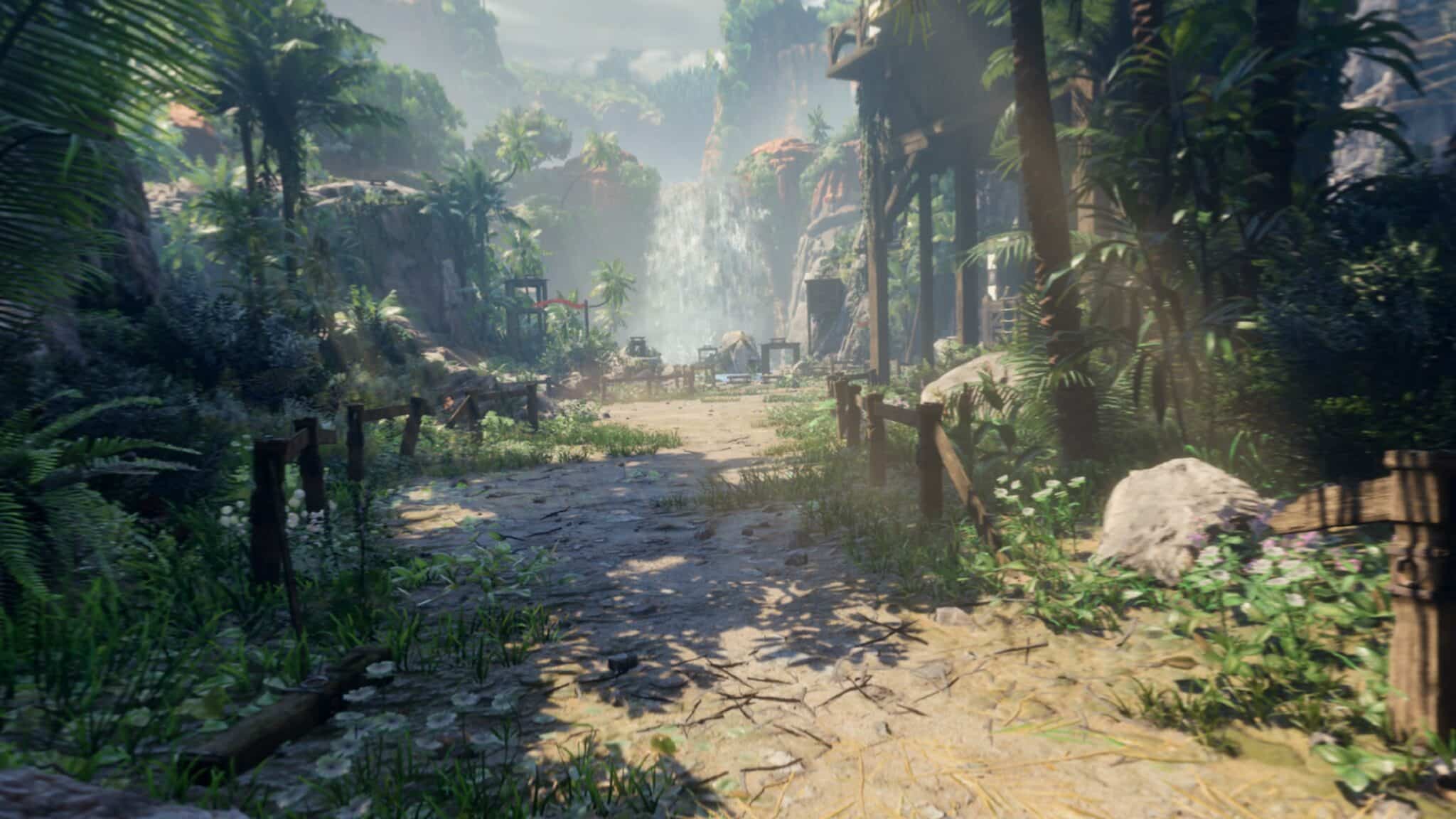
As for movement, I prefer stick-based artificial locomotion, but there’s also a ‘Gesture’ option that simulates walking by swinging your arms to move. Those who opt for the latter will be glad to know that PSVR 2’s Sense controllers are so much better at tracking than the PS3-era PS Move controllers used with PSVR.
One thing I didn’t expect is Call of the Mountain’s heavy focus on climbing; you could tell me that Sony funded The Climb: Horizon Edition and I’d believe you. Between cliffs, abandoned structures and thin ropes with a hundred foot drop below, that sense of danger kicks in. There’s even an accurate sense of bouncy tension to letting go of a rope and grabbing it again mid-air, reminiscent of the satisfying physical interactions seen in Boneworks or The Walking Dead: Saints & Sinners. Some areas require jumps to cross, which briefly slows time and allows you to grab a ledge or pickaxe from over your shoulder. One misstep can kill you, though checkpoints are fortunately generous.
On land, some areas task you with sneaking past machines, often hiding behind cover as they patrol a set route. Getting spotted simply means fighting them, but successfully pulling off stealth feels more rewarding. One section lets you hide behind a mining cart as it moves along a track giving you suitable cover from a Watcher’s gaze. Some fights are unavoidable and you can’t free roam during these fights, though Ryas can dodge left and right.
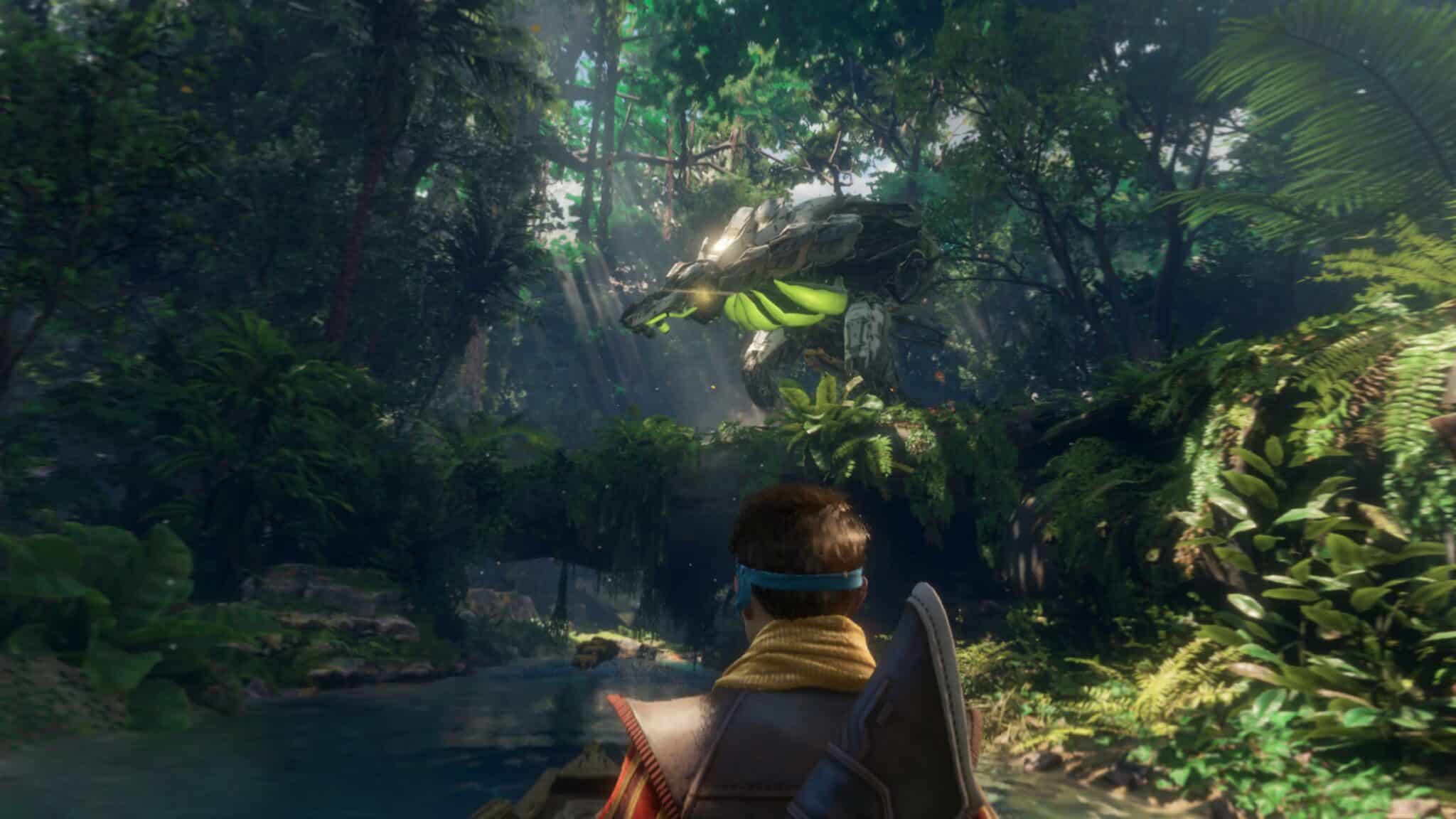
You can reach over your shoulder to grab your bow during combat. Normal arrows are unlimited, but specialized options like shock or fire arrows require specific parts to craft. The parts are in no short supply across missions but the arrows require manual crafting by placing two or three pieces into set positions – an easy job but a nice touch.
Combat isn’t as expansive as the series’ main entries. There’s no skill tree with unlockable options, for example, but taking down powerful machines like a Thunderjaw remains just as satisfying. Controller haptics heighten tension when firing arrows, while headset haptics subtly build that sense of danger after taking damage.
Call Of The Mountain’s environmental details seriously impressed me, feeling comparable to Half-Life: Alyx. Between luscious jungles, beautiful rivers with impressive water physics and snowy mountains, I enjoyed being part of this world. The environments are filled with impressive details, like how grass reacts to your touch during climbing, complemented by great sound design. Hearing metal creak as I climbed over dead machines never stopped making me nervous. One mission even uses eye tracking to register an area of interest. I love the game’s wider interactivity, too. Instruments like maracas and pan flutes offer a fun distraction, while randomly scattered paint brushes can turn walls into your own canvas.
[vc_row][vc_column][vc_cta h2=””] Horizon Call of the Mountain – Comfort
Horizon offers significant accessibility options in VR. You can play seated or standing, swap your dominant hand, use stick or gesture-based artificial locomotion and adjust Ryas’ movement speed. Smooth or snap camera turning with adjustable angles is available, as are movement vignettes of adjustable strength.
Menu navigation uses eye tracking but you can turn this off in favour of headset direction. For combat, there’s an auto loading option for arrows and time can be slowed when selecting tools.
[/vc_cta][/vc_column][/vc_row][vc_row][vc_column][vc_column_text]
It took nine hours to beat the campaign, but Call of the Mountain doesn’t end there. Dawn’s Grasp houses a Challenge Hub with an archery range and an assault course to test your climbing skills, which expands after unlocking new tools. A mini-museum stores collectibles found during missions, and picking them up will take you back to the game’s opening area for a ‘Machine Safari’ boat ride. It’s a great way to witness these machines in their not-so-natural habitat.
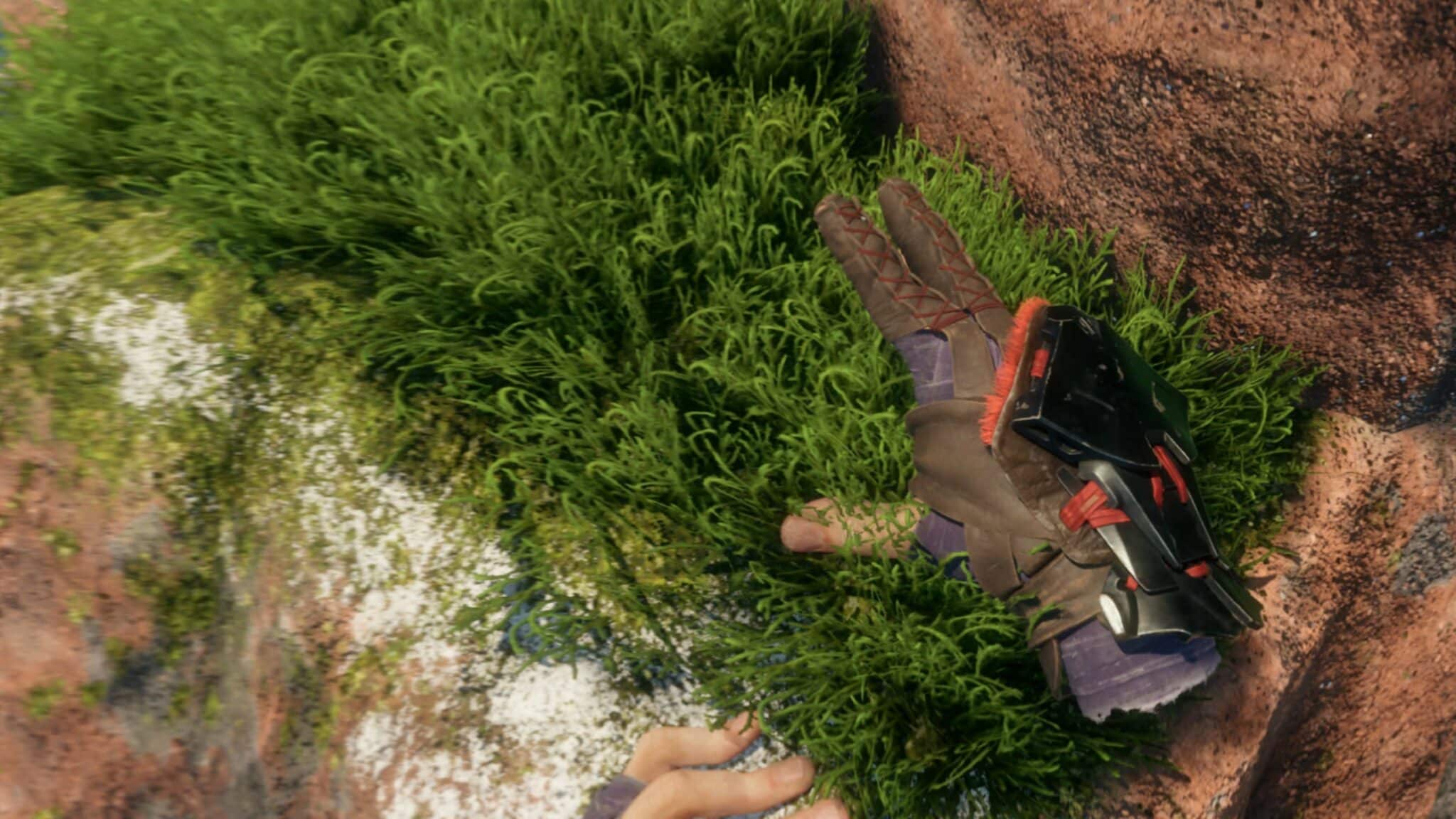
Horizon Call of the Mountain Review – Final Verdict
Horizon Call of the Mountain is a brilliant way to kick off PSVR 2 and remains compelling until the very end. By leaning into the medium’s physicality, Firesprite and Guerrilla created a game that could only work in VR and simultaneously feels faithful to the Horizon franchise. I do wish Ryas was a more interesting character and while I wouldn’t call the gameplay revelatory, what’s here feels incredibly polished and looks absolutely stunning. This is an undoubtedly an essential game for all PlayStation VR2 owners.

UploadVR focuses on a label system for reviews, rather than a numeric score. Our reviews fall into one of four categories: Essential, Recommended, Avoid and reviews that we leave unlabeled. You can read more about our review guidelines here.

